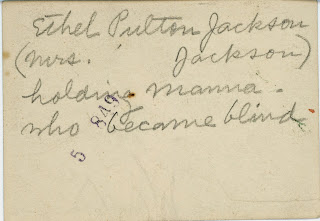I thought I had narrowed the search down when I found a Julia Martin of the right age (mother) in the 1920 census living with a Gardner family in Brooklyn, but the head of the household was MARY Gardner. Nevertheless, this family was the only plausible one I found anywhere. The children in the household were Robert, James, Edward, Lily, and Harry, and I easily found the Gardner family in the 1910 census. Robert and ANNIE were the parents!
My search for Annie was put on hold until the 1930 census was released in 2002, By then, Annie was a widow and her son Robert was head of the household. Julia was not listed. When the 1940 census was released ten years later, I discovered that Annie Gardner was no longer enumerated—in Robert’s household, or elsewhere.
 On the Italian Genealogy Group’s website, I found there was a death certificate for an Annie Gardner who died in Brooklyn on 14 February 1939. Not wanting to waste time and money to obtain a document that might not be for the right person, I searched the Internet for "Annie Gardner" Brooklyn 1939. What luck! The Brooklyn Eagle had published a death notice and an obituary for Mrs. Annie Gardner on 15 February 1939.1 The latter identified her as the daughter of James Martin and Julia Kiley The obituary also stated that Annie had been buried in Holy Cross Cemetery in Brooklyn.
On the Italian Genealogy Group’s website, I found there was a death certificate for an Annie Gardner who died in Brooklyn on 14 February 1939. Not wanting to waste time and money to obtain a document that might not be for the right person, I searched the Internet for "Annie Gardner" Brooklyn 1939. What luck! The Brooklyn Eagle had published a death notice and an obituary for Mrs. Annie Gardner on 15 February 1939.1 The latter identified her as the daughter of James Martin and Julia Kiley The obituary also stated that Annie had been buried in Holy Cross Cemetery in Brooklyn.Wouldn’t my mother have been interested to know who Annie Gardner was and what became of her?
1. "Mrs. Annie Gardner," obituary, The Brooklyn (New York) Eagle, Wednesday, February 15, 1939, p. 11, col. 6.







































